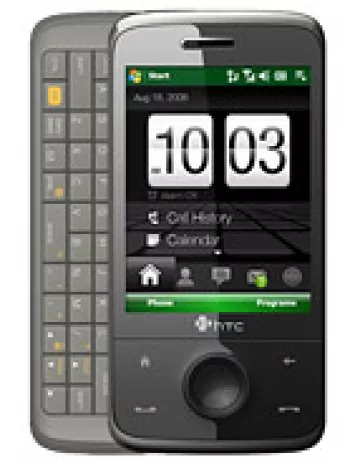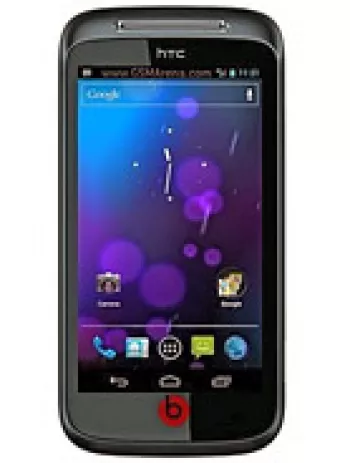
Overview of HTC Desire VC
Released in July 2012, the HTC Desire VC was a unique dual-SIM smartphone, bridging both GSM and CDMA networks, a feature that made it versatile for users in regions with different network technologies. As part of HTC's Desire series, it carried an array of features suitable for the mid-range market segment at the time.
Design and Build
The HTC Desire VC boasted dimensions of 119.5 x 62.3 x 9.5 mm, showcasing a compact and portable form factor that weighed only 119 grams. Its dual SIM functionality, with Mini-SIM slots operating on a dual standby basis, was particularly appealing to users who needed to balance personal and work communications or travel frequently between areas with different mobile infrastructures.
Display Features
The device featured a 4.0-inch IPS LCD display with a resolution of 480 x 800 pixels. With a screen-to-body ratio of approximately 61.2%, the display provided a satisfactory visual experience for its time, offering decent clarity with a pixel density of around 233 ppi. This made it suitable for everyday media consumption like browsing, reading, and casual gaming.
Performance and Platform
Under the hood, the HTC Desire VC was powered by a Qualcomm MSM7227A Snapdragon S1 chipset, paired with a 1.0 GHz Cortex-A5 CPU and Adreno 200 GPU. While this might seem modest by today's standards, at the time, it offered a competent performance for standard smartphone tasks. The device ran on Android 4.0 Ice Cream Sandwich, enhanced by HTC's Sense UI 4, which provided a user-friendly interface and additional features over the stock Android experience.
Camera Capabilities
The smartphone was equipped with a 5 MP autofocus main camera, complemented by an LED flash, enabling basic photography and video recording needs. Although there was no front-facing camera for selfies—a standard limitation for smartphones of its class at the time—the camera was still adequate for capturing everyday moments.
Memory and Storage
The HTC Desire VC offered 4GB of internal storage, backed by 512MB of RAM. While this limited the number of apps and media that could be stored directly on the device, the inclusion of a microSDHC card slot allowed users to expand their storage up to a level that better suited their requirements, making it a flexible choice for users needing additional space.
Connectivity and Communication
In terms of connectivity, the device catered to a range of communication needs with its Wi-Fi 802.11 b/g/n, Bluetooth 3.0, GPS with A-GPS, and stereo FM radio with RDS capabilities. This ensured that users could connect and share with ease, whether at home, at work, or on the move. The inclusion of a microUSB 2.0 port supported standard data transfer and charging functions.
Battery Life
The HTC Desire VC was powered by a removable 1650 mAh Li-Ion battery. This provided a reasonable battery life, balancing the device's power needs with prolonged usage. The removable nature of the battery also gave users the advantage of swapping it out, extending the device's practical operational life.
Additional Features
Additional features of the HTC Desire VC included an accelerometer and proximity sensor, which were standard at the time but enhanced the overall user interaction by facilitating automatic screen orientation and disabling touch input during calls. The phone was available in two color variants, Black and White, catering to different stylistic preferences.
Market Placement and Pricing
At a price point of approximately 150 EUR upon release, the HTC Desire VC was positioned as a cost-effective solution for consumers who required essential smartphone functionalities coupled with the flexibility of dual-network support. Despite its discontinuation, it represented an important phase in HTC's product lineup and appealed primarily to budget-conscious users who valued network versatility.
Conclusion
The HTC Desire VC, while no longer available, played a significant role in the dual-sim smartphone market segment, offering vital features and reliable performance suitable for its time. Its practical design and flexibility in network connectivity, alongside its accessible pricing, rendered it a favorable choice among users seeking functionality without the premium cost. Its legacy continues to address the importance of catering to diverse network environments in a cohesive mobile device.
Key Features of HTC Desire VC
- Dual SIM functionality (Mini-SIM, dual stand-by)
- IPS LCD Display with 4.0 inches size
- Android 4.0 (Ice Cream Sandwich) with Sense UI 4
- Powered by Qualcomm MSM7227A Snapdragon S1 chipset
- 1.0 GHz Cortex-A5 CPU
- Expandable storage via microSDHC card slot
- 5 MP autofocus main camera with LED flash
- Wi-Fi connectivity (802.11 b/g/n), hotspot, and DLNA support
- Bluetooth 3.0 with A2DP
- GPS and A-GPS support
- Stereo FM radio with RDS
- Removable Li-Ion 1650 mAh battery
- Available in Black and White color options
HTC Desire VC Drawbacks
- Discontinued status, meaning it's no longer supported with updates or manufacturing.
- Low memory capacity with only 512MB RAM, which may affect performance.
- Limited internal storage of 4GB may require frequent cleaning or use of external cards for storage.
- Outdated Android 4.0 (Ice Cream Sandwich) operating system without further update options.
- Older chipset and CPU (Qualcomm MSM7227A Snapdragon S1, 1.0 GHz Cortex-A5), which can hinder demanding app performance.
- No front-facing selfie camera, limiting its use for video calls or selfies.
- 3G connectivity only, lack of support for modern 4G or 5G networks.
- Low screen resolution (480 x 800 pixels) which may not provide the best display clarity.
- Older Bluetooth version 3.0, which is slower compared to newer versions.

View Also
More Phones
All Rights Reserved +14266 Phones © Mobilawy 2025

























